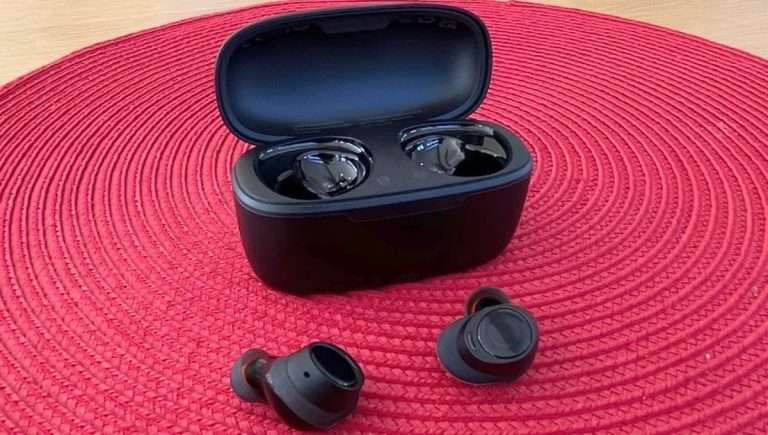Top 10 Best Multimeters 2024
Join the numerous customers who have relied on Consumers Voice to help them make smarter purchasing decisions. Our experts will assist you in selecting the best one for your requirements. Find the ideal Multimeters for you with the aid of our unbiased professional evaluations and data-driven buying suggestions.
AstroAI Digital Multimeter and Analyzer TRMS 6000 Counts Volt Meter
- Accurately measures AC/DC Current, AC/DC Voltage, Capacitance, Frequency, Duty Cycle, Resistance, Diode, Continuity and Temperature.
- Support Data Hold, Large LCD Backlit Screen, Auto Shut-off and Hanging Magnet, and Kickstand make the process of measurements easier.
- Professional level is reflected in some features include Auto-Ranging capability, and True RMS for measuring both.
- This Multimeter is a golden partner to help to troubleshoot a variety of automotive and household electrical.
- Double ceramic fuse is anti-burn and protects from overloading,and it will be more secure and reliable.
TESMEN TM-510 Digital Multimeter, 4000 Counts, Smart Measurement
- You can measure the voltage on the AC wire without having to connect the wire, which makes troubleshooting the line much easier.
- The multimeter is equipped with high-quality batteries to enhance user experience.
- The outer silicone cover protects the multimeter from damage and potential electric shock.
- Supports Data Hold, Automatic shutdown, Low battery indicator, Backlight display, and Flashlight.
- All these convenience features make the instrument more than enough for daily use by amateurs, car owners.
Klein Tools MM400 Multimeter, Digital Auto Ranging, AC/DC Voltage
- Multimeter measures up to 600V AC/DC voltage, 10A AC/DC current and 40 MOhms resistance
- It can also measure temperature, capacitance, frequency, duty-cycle, and test diodes and continuity.
- Klein tools test and measurement product line was exclusively designed from the ground up by electricians for electricians.
- Low battery indicator and easily accessible battery compartment.
- For use in basic and controlled electromagnetic environments such as residential, business and light-industrial locations.
AstroAI Multimeter Tester 2000 Counts Digital Multimeter
- Accurately measures AC/DC Voltage, DC Current, Resistance, and Diode.
- This Multimeter has a sampling speed of 2 times per second; Built-in a backlight LCD display with 3 ½ digits.
- The silicone cover is able to protect the multimeter from failing damage and prevent electric shocks.
- Support Data Hold, low battery indicator and continuity buzzer.
- Includes Convenient feature like LCD Backlit Screen makes it easy to use in dimly light areas.
Klein Tools MM320KIT Digital Multimeter Electrical Test Kit
- Digital Multimeter accurately measures up to 600V AC/DC voltage, 10A DC current, and 2 ohm resistance.
- In addition to voltage, current, and resistance, the meter tests batteries, diodes, and continuity, providing comprehensive testing.
- Voltage Tester NCVT3P detects from 12 to 1000V AC or 70 to 1000V AC,
- The NCVT3P features a bright flashlight that illuminates the work area, offering convenient visibility.
- The ET45 comes with a built-in test lead holder on the back, providing two positions for correctly spacing the leads for testing tamper.
Fluke 117 Digital Multimeter, Non-Contact AC Voltage Detection
- The Fluke 117 is the ideal meter for demanding settings like commercial buildings, hospitals and schools.
- AutoVolt automatic AC/DC voltage selection. DC millivolts - Range 600.0 mV, Resolution : 0.1 m.
- Low input impedance: helps prevent false readings due to ghost voltage.
- Large white LED backlight to work in poorly lit areas.
- True RMS for accurate measurements on non-linear loads.Operating temperature:-10°C to plus50°C.
Klein Tools MM450 Multimeter, Slim Digital Meter
- Measures AC/DC voltage up to 600V, 10A AC/DC current, 50MΩ resistance.
- LEDs on the meter illuminate to indicate proper test lead placement, enhancing accuracy and safety during measurements.
- Large, high-visibility reverse-contrast LCD ensures improved viewability in all lighting conditions.
- Auto-ranging and True Root Mean Squared (TRMS) technology provides precise and accurate measurements.
- Slim profile allows the multimeter to conveniently fit into most pockets, making it easy to carry and use on the go.
Crenova MS8233D Multimeter 6000 Counts Digital Multimeter DC AC Volt Meter
- Two built-in fuses provide overload protection on all ranges. Insulated rubber holster prevents the user from electric shock.
- Equipped with a 6000-count (3 5/6 digits) LCD display, the multimeter tester gives clear and accurate readings.
- Bright backlight allows for working in the dark places.
- The multi tester features practical functions, such as switchable manual/auto range modes, max/min value, data hold.
- Non-contact voltage testing has sound and light alarms. When AC voltage is detected, the buzzer beeps and light flashes.
FLUKE-101 Digital Multimeter
- Designed for basic electrical tests, the Fluke 101 offers reliable measurements for electricians and heating/AC techs.
- This small, lightweight multimeter fits comfortably in your hand but is rugged enough to withstand daily use for years to come.
- Basic dc accuracy 0.5% CAT III 600 V safety rated.
- Diode and continuity test with buzzer.
- Small lightweight design for one-handed use.
Klein Tools MM325 Multimeter, Digital Manual-Ranging 600V AC/DC Voltage Tester
- Measures AC/DC voltage up to 600V, 10A DC current, 2MΩ resistance.
- LEDs on the meter illuminate to indicate proper test lead placement, enhancing accuracy and safety during measurements.
- LCD shows clear readings in low-light conditions for enhanced visibility.
- Battery test mode can be used for checking if batteries are working.
- Test lead holders on the back of the meter, kickstand and optional magnetic hanger.
In the world of electronics and electrical engineering, multimeters stand as indispensable tools. Whether you’re a seasoned professional or an amateur enthusiast, having a good understanding of multimeters is crucial. Let’s delve into what multimeters are, how they work, their types, and practical tips for using them effectively.
What is a Multimeter?
A multimeter, short for “multiple meter,” is a versatile instrument used to measure electrical parameters such as voltage (volts), current (amps), and resistance (ohms). It’s an essential tool for diagnosing electrical issues, testing components, and ensuring circuits are functioning as expected. Modern multimeters may also measure capacitance, frequency, temperature, and more, depending on their capabilities.
Components of a Multimeter
- Display: Typically an LCD screen that shows measurement readings.
- Selection Dial: Allows you to choose the type of measurement (voltage, current, resistance, etc.) and the range.
- Input Jacks: Terminals where test leads (probes) are plugged in. These are usually color-coded (red for positive, black for negative/common).
- Function Buttons: Some multimeters have buttons for additional functions like holding a reading (Hold), selecting ranges manually (Range), or turning on a backlight.
Types of Multimeters
- Analog Multimeters: Use a needle on a scale to indicate readings. They are less common today but still favored by some for their simplicity and ease of use in certain scenarios.
- Digital Multimeters (DMMs): Display readings digitally on an LCD. They offer higher accuracy, faster readings, and often include more features like auto-ranging and data logging.
How Multimeters Work
Multimeters work based on principles of electrical measurement:
- Voltage: Measures the potential difference between two points in a circuit.
- Current: Measures the flow of electrons through a circuit.
- Resistance: Measures the opposition to current flow in a circuit.
To measure these parameters, the multimeter applies a small known voltage or current to the component under test and measures the resulting current or voltage. It then calculates the parameter based on Ohm’s Law (V = IR for resistance, I = V/R for current).
Using a Multimeter
- Select the Measurement: Turn the dial to the desired measurement type (V, A, Ω, etc.).
- Set the Range: Choose an appropriate range if your multimeter doesn’t have auto-ranging.
- Connect the Probes: Red probe to positive (+) and black probe to negative (–).
- Take the Reading: Read the measurement value on the display.
- Safety: Always use the correct input terminals and follow safety precautions, especially when dealing with high voltages or currents.
Practical Applications
- Troubleshooting: Identify faulty components or connections in circuits.
- Testing Components: Check resistors, capacitors, diodes, and transistors for values and functionality.
- Basic Circuit Checks: Ensure circuits are properly wired and powered.
Tips for Beginners
- Read the Manual: Understand your multimeter’s features and limitations.
- Start Simple: Begin with basic voltage and resistance measurements.
- Safety First: Always turn off power before connecting the multimeter to a circuit.
- Calibration: Periodically calibrate your multimeter for accurate readings.
Conclusion
Multimeters are indispensable tools for anyone working with electronics, offering a wide range of capabilities from basic voltage measurements to advanced circuit diagnostics. Understanding how to use them effectively not only enhances your technical skills but also ensures safety and accuracy in your electrical projects. Whether you’re a hobbyist or a professional, mastering the multimeter is a fundamental step towards becoming proficient in electronics.

















